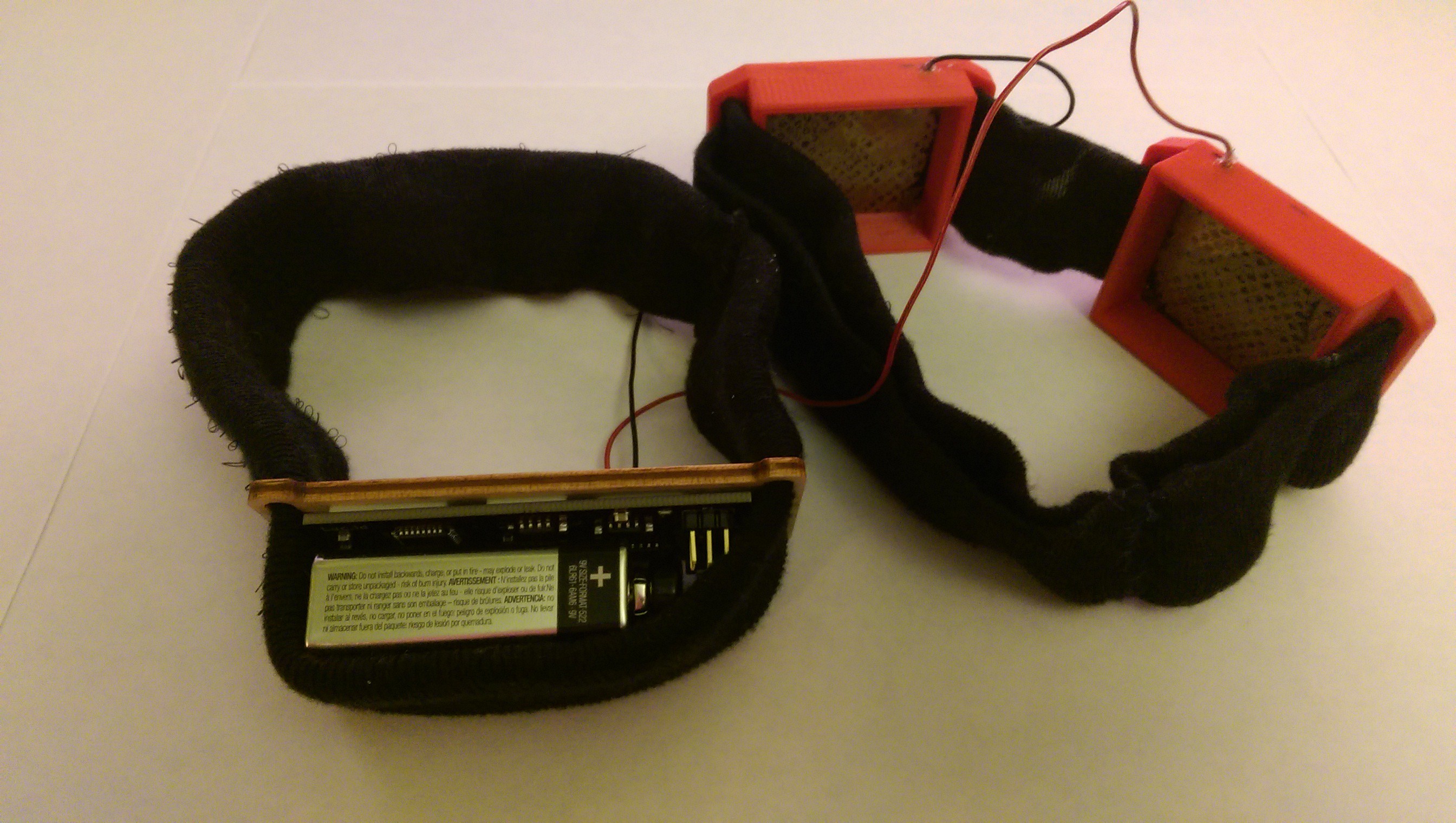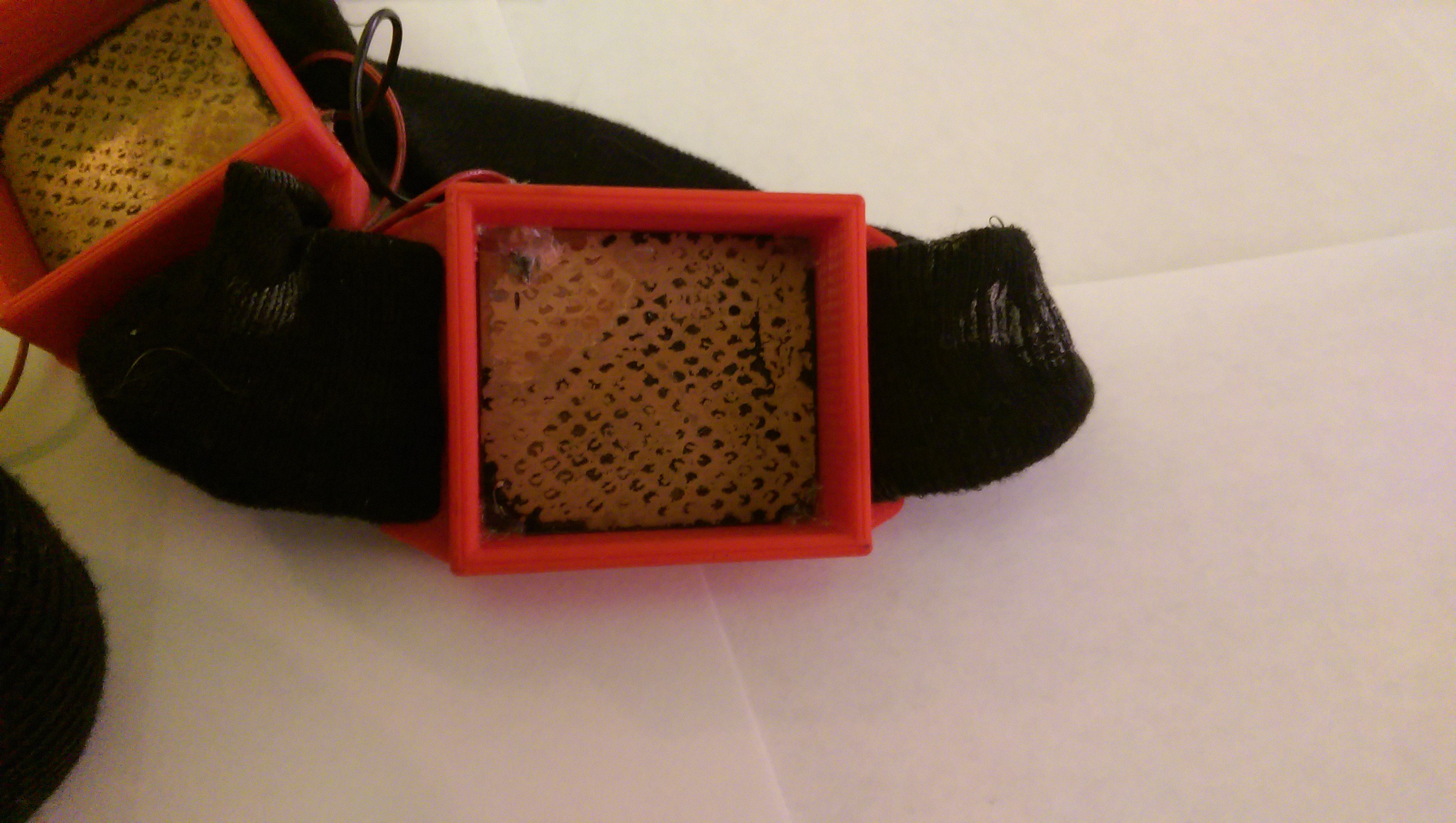Update! - I have finished the headband and tried out the device one night. Unfortunately I did not have any dreams that night because I was not used to wearing the headband and was anxious about lucid dreaming. For the electrodes I 3-D printed two housings and cut out two copper squares that went in the bottom of the electrode housing. On top of that I cut some paper towel squares that would be soaked in saline so that they are conductive. The saline soaked paper towels were the part actually in contact with my head. I also laser cut a wooden bracket for the board to sit on and connect to a head band so that I could wear it.
As far as the experiment went, I could definitely tell that the electrodes were passing current through my head. I was running the output at 250 micro amps and there was a slight tingling feeling that I could feel when it was on. Also when I placed the electrodes near my eyes, I could see fast, faint flashes called phosphenes which are normal. I awoke many times during the night because I was anxious and restless. I woke up many times after the device turned on around 5am or so and witnessed the 2 minute intervals of stimulation and could slightly feel them. I could not go in to a heavy sleep and am almost certain that I had no dreams. Hopefully repeated trials will allow me to get over my anxiety and I can get into a deeper sleep.
I need to make some improvements to the device that will help me sleep better with it on and be overall more convenient to use. First I think that the electrodes much bigger than they should be so I will redesign the housings and make them much smaller. The wooden piece that holds the board onto the headband can also be made smaller. I want to use conductive thread in the headband instead of regular wires for the electrodes in order to make everything neater and easier to use. I also plan on making a GUI that will streamline the programming process and make it easier for others with no coding background to use, it should also make it much easier for me to use. Also as you can see below, after using the electrodes the copper plates had a significant amount of corrosion on them, so I will be changing those to stainless steel.
Finally the electrode layout on my head wasn't the best. I don't believe that I had them in the exact positions given by the study, also the study called for 4 2in x 2in electrodes and I only used two on one side of my head, so I will be adding two more for the other side of my head.
Here are some pictures of everything. Remember that there are lots of files for this project on my gethub page that was linked to at the top of this page. Thanks for following along!






 Tyler Sisk
Tyler Sisk
Discussions
Become a Hackaday.io Member
Create an account to leave a comment. Already have an account? Log In.
What helped me to fall asleep with such a headband was to just wait a few hours until you can't do anything but fall asleep instantly. This also gives you a high chance on sleep-onset REM sleep. Maybe not the most healthy way, but it works. For me a big device isn't the problem. It's more that knowing what this device will do sometime held me awake.
For first experiments you could also leave out the electrode housings and/or use longer wires and put the electronics besides or behind (of your bed allows for that) your head.
Are you sure? yes | no